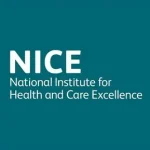
13-24 year olds with cancer in England: Incidence, mortality and survival
Last week, the Teenage Cancer Trust released a report examining the cancer landscape for teenagers and young adults in England. Overall, mortality rates of all cancers in 13-24 year olds have decreased from 42.9 per million in 2001 to 32.3 per million in 2015: the data makes a strong case for recognising the unique needs of this age bracket and sustaining funding for specialist support for teenagers and young people into the future.
We’ve broken down what the report means for the brain tumour community specifically, and the work of little brainstrust.
Key findings
The key findings from the report for teenagers and young adults with a brain tumour are as follows:
- Central Nervous System (CNS) cancers accounted for 14% of diagnoses over the past 2 decades
- The average yearly number of new cases diagnosed in 13-18 year olds in England between 2013-15:
- Astrocytoma – 47
- Glioma – 23.4
- Craniopharyngioma – 6.7
- Unspecified benign and borderline intercranial neoplasms – 8.1
- Reductions were seen in the mortality rates of teenagers and young adults from CNS cancers in this study, but this diagnostic group still remains the most likely cause of death by cancer in young people in England.
What does this mean?
It is very encouraging to see the improvements in mortality and five-year survival rates for teenagers and young people with cancer. With survival improving, the work of little brainstrust is even more imperative. For children and young people surviving a brain tumour, there can be life-long side effects because of treatment, or the tumour itself.
We know that additional care and support is required following intense brain tumour treatment, and that a special focus is needed to help people live with and beyond their diagnosis as they transition into adulthood.
Speak to Khadijha, our Support Specialist for Children and Families, if you would like to know more or need support.










